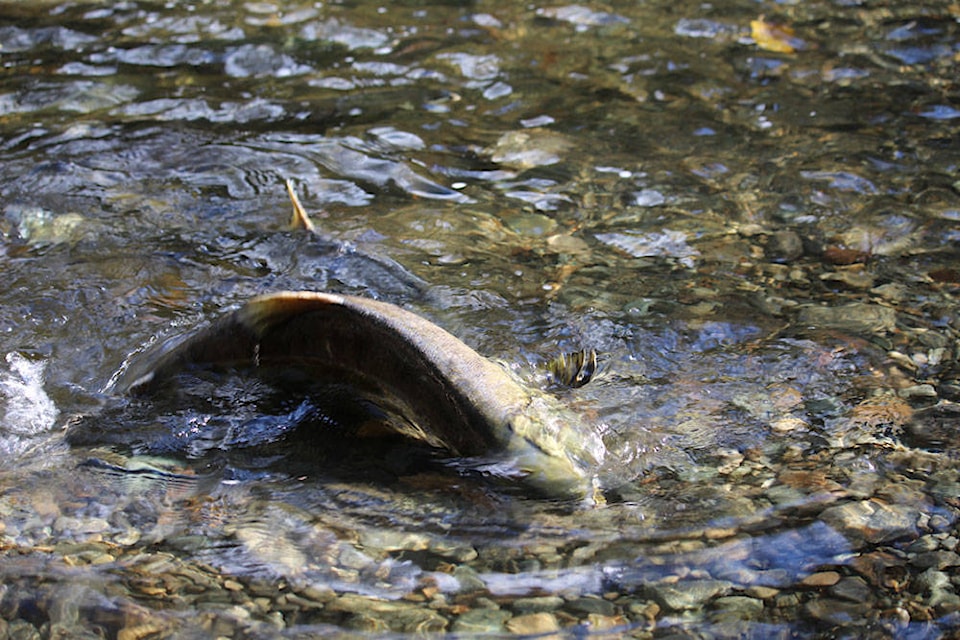With fall salmon runs coming to an end, recent numbers show certain pockets of Vancouver Island have experienced at or above average returns of chinook, coho and chum.
According to a salmon bulletin posted by the Department of Fisheries and Oceans Canada from Nov. 30, the salmon runs have done fairly well, especially on southern parts of Vancouver Island.
The DFO estimated roughly 20,000 chinook salmon returned to Cowichan River during the fall run. This is much higher than the four-year average of just 12,000.
Kevin Pellett of the DFO said this could have to do with the fact that a significant portion of the chinook population in Cowichan River is wild.
“Cowichan has been a bright light in terms of chinook numbers the last couple years,” Pellett said. “We’ve been seeing above average returns since about 2015 or so.”
Pellett said a lot of other systems on the Island are hatchery dominated but most of them are still bringing in “about average” returns.
READ MORE: Half of Canada’s chinook salmon populations in decline: scientists
The wild chinook, according to Pellett, are better adapted to the changing ecosystems which could be why they are doing much better and the Island’s coho salmon are also doing well.
Pellett said historically, in the 1980s, female coho went out in the spring and stayed in the Strait of Georgia. In the 1990s they disappeared, but it seems they have come back in the past couple of years.
Many sport fishers in the area were calling in reports of female coho during the winter months this year, and Pellett said “it was entirely unexpected.”
Coho returns were also at or above average this year, with places like Big Qualicum River seeing counts of about 9,980 coho.
Pellett said another hypothesis as to why coho have been doing well has to do with the transient killer whale population in the Strait of Georgia. He said there have been more transient killer whales in the Strait that have been present for more days.
The whales eat marine mammals such as sea lions and seals and those mammals tend to feed on juvenile coho and chinook.
“[The whales] change the behaviour of harbour seals,” Pellett said. “If [the seals] are staying closer to shore than the salmon might have a better chance of surviving.”
As for chum salmon, areas such as Goldstream, Nanaimo and Cowichan River have also seen average or above average returns, and Pellett said the most recent count showed about 50,000 chum salmon in Goldstream River.
READ MORE: Salmon attracting people and birds to Goldstream Provincial Park
However, just to the north in areas like Big Qualicum and Little Qualicum River, returns have been significantly less.
In Big Qualicum River, the estimated count as of Nov. 30 was 11,166 chum. This is in comparison to a four year average count of 90,595.
Little Qualicum River saw an estimated count of 8,679 with the four year average being 69,316.
“Everybody wants to know why,” Pellett said, pointing out one thing to consider with chum is that they follow four-year patterns of abundance.
Four years ago, a warm water pocket in the North Pacific drew several chum out there which “likely didn’t do them any favours,” according to Pellett.
However, in 2015, a cold water pocket was around South Vancouver Island where southern chum stocks could have had better chances of survival, but Pellett notes these are just theories.
Pellett also said it is important to remember that salmon stocks always fluctuate, so while some areas are seeing significantly high returns, it may not stay this way for long.
“We see fluctuations between high and low abundance over decades,” Pellett said. “Whatever goes up, must come down.”
shalu.mehta@goldstreamgazette.com
